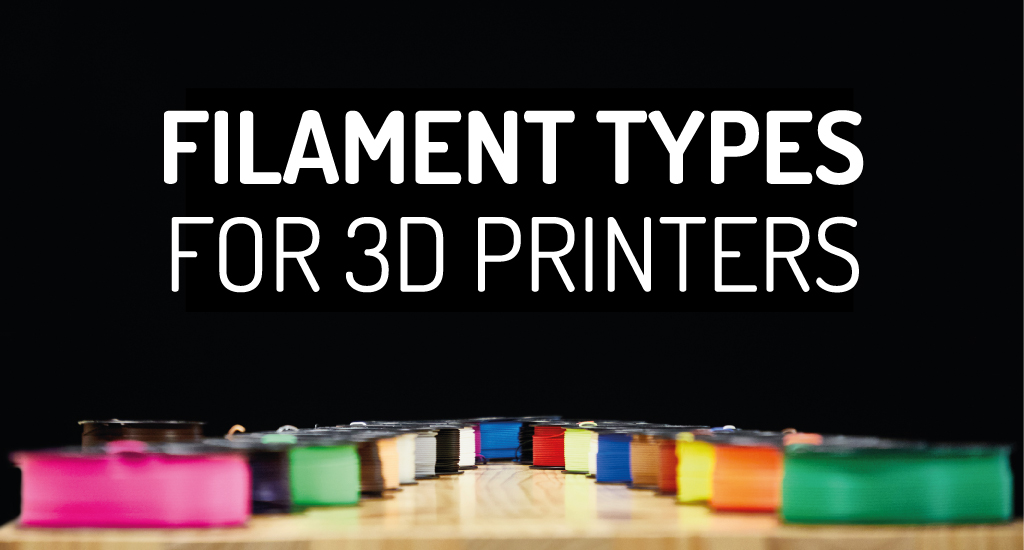Whether you have just bought a 3D printer and want to know more about types of filament or if you are an experienced maker, surely this guide on types of filament for 3d printers will be great for you.
As you already know, on our website we have a wide range of colored filaments and each of them has a technical sheet where we detail the printing techniques to be applied to each material, recommendations and printing tips.

The filaments for 3D printers are made of various materials that will behave differently.
Here we go: What types of filaments are there? What are the differences between them?
PLA Filament
Pollactic acid or PLA is a material with a natural origin (its main raw material is corn) and it is biodegradable.
This material offers higher printing speed than other options, making it the preferred choice for 3D printing novices as well as experienced users.
Another advantage of PLA is that you do not need a heated bed for printing. The extruder temperature will be around 200º, depending on the printer.
In second place we find ABS (Acrylonitrile Butadiene Styrene) and it is not the most popular among novice makers because it is a material with great resistance, both to impacts and to high temperatures.
It is important to know that as a disadvantage it produces harmful gases at the time of printing. It is necessary to have a heated bed at about 70ºC-100ºC and the extruder temperature must be higher than that of PLA (between 230º – 260ºC).
Flexible filament
A very interesting and widely accepted material are flexible filaments. The most common are TPE and TPU.
These materials are composed of elastomers that give them great elasticity and, as the name suggests, the pieces that are printed are flexible.
Its properties are unique in the market, it is resistant to bending, traction, compression, temperature and tearing in the direction of the layers. With this material you will get very versatile pieces.
In our store you will find it under the name TENAFLEX in different assorted shades to give life to your creations.
PETG filament
PETG is polyethylene terephthalate, with a modifier (Glycol-modified), which makes a change in the chemical structure that makes it more transparent, less brittle and easier to print.
The difference with ABS is that it is stronger and easier to print because it melts at a higher temperature. Its mechanical properties are optimal, it has more elasticity, it is more resistant to impacts, it has more adhesion between layers and it is more resistant to temperature compared to PLA.
It is necessary to have a heated bed at about 60ºC-80ºC and the extruder temperature must be between 220º – 240ºC.
As you already know, PLA is a biodegradable plastic that is obtained from natural resources from the starch extracted from corn, beets and wheat. In addition, this filament contains a 50% load of natural cork together with the PLA mixture.
For the most imaginative makers, we have this novel material designed to make decorative objects, or pieces that imitate wood.
The best thing about this material is that it weighs nothing and offers an amazing finish.
Its extrusion temperature is between 230-270 ℃, it is recommended to use a hot bed at 90 ℃.
In the production of 3D filament, excess material is created that we do not throw away, but we recycle and create a new recycled PLA HD filament for 3D printers.
We reduce the amount of filament that is wasted, reuse waste to create new products, and recycle the filament, the boxes where we ship the filament, and the spools where we wind them.
The new colors of light filament and dark filament are created from filament waste that is grouped by color gamut. The color is uniform and the tone results from the mixture of filaments of various colors, so the tone will never always be the same, it is an ideal resource for tests or mockups.
We recommend printing with an extruder temperature between 200 and 230 ℃ and a bed temperature between 50 – 60 ℃.
